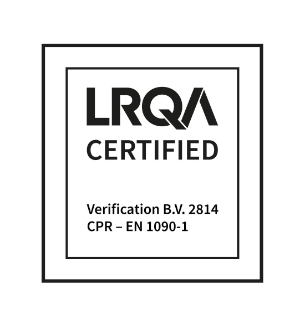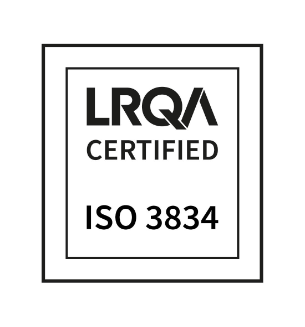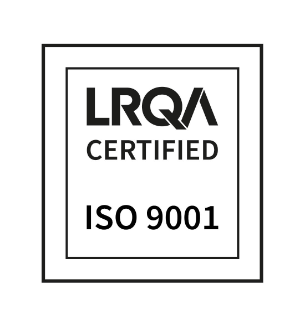Knowledge centre
2. Material choice: sheet metal
The sheet metal materials most commonly used at Kepser are presented in the tables in this chapter. Other materials can be discussed. The sheets are held in stock in the standard dimensions of 2000 x 1000, 2500 x 1250 and 3000 x 1500 mm.
Larger sizes and intermediate sizes on request. The sheets are available in a range of designs (flat sheet, perforated sheet, bulb plate) and thicknesses. Various grades of the most common sheet thicknesses are always in stock.
In addition, Kepser has an extensive assortment of profiles in stock:
- Bar, L, U and flat-steel profiles in the grades S235JRG2 and S355JO.
- Round tubes (blank, cold-rolled or hot-rolled) in the grades ST 33, ST 35, ST 37 and ST 52 (welded and seamless).
- Rectangular and square tubes (blank, cold rolled or hot-rolled) in the grades ST372, ST 443 and ST 523.
- Other profiles (e.g. rails and open box) on request.
Steel
This handbook deals with the most common types of steel. For advice on your choice of sheet metal material, feel free to contact Kepser.
Hot-rolled steel
From a thickness of 3 mm, steel sheet is hot rolled and supplied in a pickled, oiled or blasted condition. Hot-rolled sheet metal is excellent for shaping purposes. This is because it does not have a rolling skin, which results in less tool wear and contamination.
| Materiaalnummer | Staal | Tensile strength N/mm² | Sheet thickness (mm) |
|---|---|---|---|
| 1.0037 | S235JR | 340-470 | 3 t/m 10 |
| 1.0038 | S235JR | 340-470 | 12 en dikker |
| 1.0570 | S355J2G3 | 510-680 | 3 t/m 100 |
Kepser differentiates between normal steel sheets and laser quality sheets. The latter have more favourable cutting properties: better cleanness, meaning they do not contain any elements that could cause the formation of burrs, good flatness and a low internal stress level. Furthermore, they are significantly better to shape and galvanise and excellent for welding.
|
Material number |
Steel |
Tensile strength N/mm² |
Sheet thickness (mm) |
|---|---|---|---|
| Fabriekspecificatie | RAEX 250 C | 360-440 | 3 t/m 20 |
| Fabriekspecificatie | DOMEX 250 YP | 360-460 | 3 t/m 15 |
| Fabriekspecificatie | RAEX 420 MC | 490-620 | 3 t/m 20 |
| Fabriekspecificatie | DOMEX 420 MC | 490-620 | 3 t/m 12 |
Thermomechanically rolled steel
The thermomechanical rolling of steel creates a very fine-grained product with a strength and shaping properties that cannot be obtained through heat treatment alone. Furthermore, their weldability is excellent.
| Material number | Steel | Tensile strength N/mm² | Sheet thickness (mm) |
|---|---|---|---|
| 1.8974 | S 700MC | 750-950 | 3 t/m 10 |
| 1.8974 | DOMEX 700 MC | 750-950 | 2 t/m 10 |
Wear-resistant steel
Wear-resistant steel, like the name says, has a high resistance to wear. This resistance is obtained by hardening the material. Due to its composition, wear-resistant steel has a high carbon equivalent and a relatively low critical cooling speed. Given the risks that this can pose during welding, the welding of wear-resistant steel is not recommended (if possible). Moreover, machinability is generally poor due to the high resistance to wear.
| Material number | Steel | Tensile strenght N/mm² | Sheet thickness (mm) |
|---|---|---|---|
| 1.5223 | 42MnV7 | 700-860 | 3 t/m 30 |
Heat-resistant steel (boilerplate)
For constructions that are have to withstand high temperatures for extended periods of time, heat- resistant steel is used. This type of material actually resists shaping.
| Material number | Steel | Tensile strenght N/mm² | Sheet thickness (mm) |
|---|---|---|---|
| 1.5415 | 16 Mo3 | 440-590 | 2 t/m 16 |
Cold-rolled steel
Cold-rolled steel is manufactured from rolls of hot- rolled steel. First, the sheet is rolled out to smaller thicknesses. Next, the material is annealed and lightly milled. Sheets of cold-rolled steel have a good flatness and small thickness tolerances, and are available in thicknesses of up to 3 mm. Kepser opts for a quality variance of 1⁄2 DIN.
| Material number | Steel | Tensile strenght N/mm² | Sheet thickness (mm) |
|---|---|---|---|
| 1.0330 | DC01-A-m | 270-410 | 0.35 t/m 3 |
Electrolytically galvanised steel (zincor)
Electrolytically galvanised steel sheets are less sensitive to rust due to their zinc layer. Usually, however, the zinc layer is thin, meaning that products should undergo further treatment to acquire definitive protection against rust. Normally, the layer thickness is 2.5 μm, but larger layer thicknesses of up to approx. 10 μm are also possible.
| Material number | Steel | Tensile strenght N/mm² | Sheet thickness (mm) |
|---|---|---|---|
| 1.0330 | DC01+ZE25/25-APC | 270-410 | 0.5 t/m 3 |
Thermally galvanised steel (sendzimir)
In order to thermally galvanise steel sheets, they are first passed through a zinc bath and then treated with a chemical. The range of applications is diverse. The thickness of the zinc layer is 18 to 20 μm.
| Material number | Steel | Tensile strenght N/mm² | Sheet thickness (mm) |
|---|---|---|---|
| 1.0226 | DX51D+Z275/N-A-C | 500 | 0.4 t/m 4 |
Weatherproof steel (manufacturer’s name: CorTen)
Weatherproof steel has good resistance to corrosion. This is thanks to the well adhering, fairly passive and dense surface layer (oxide film). This layer forms under normal atmospheric conditions. The ability to process weatherproof types of steel is comparable to that of unalloyed types of steel.
| Material number | Steel | Tensile strenght N/mm² | Sheet thickness (mm) |
|---|---|---|---|
| 1.8962 | CorTen A | 454 | 1 t/m 2.5 (KGW) |
| 1.8962 | CorTen A | 510-610 | 3 t/m 12 (WGW) |
Stainless steel
Stainless steel grades 304(L) and 316(L) up to and including a sheet thickness of 8 mm are supplied in a cold-rolled condition, with finishing quality Finish 2B. From 10 mm, the sheets are supplied in a hot- rolled condition, with finishing quality Finish 1D. The sheet can also be ordered with film, sanded, brushed or polished.
| Material number | Stainless steal | Use/properties |
|---|---|---|
| 1.4301 | 304 | For general purposes. (C≤ 0.07%) |
| 1.4306 | 304 L |
The same, but often used for applications requiring a lot of welding (for avoiding intercrystalline corrosion). (C≤ 0.03%) |
| 1.4401 | 316 |
For general purposes, but considerably better corrosion resistance. (C≤ 0.07%) |
| 1.4404 | 316L |
The same, but often used for applications requiring a lot of welding (for avoiding intercrystalline corrosion). (C< 0.03%) |
| 1.4571 | 316Ti |
Stabilised with titanium, a stronger material but less corrosion resistant. |
| 1.4828 | 309 |
Mainly as heat-resistant stainless steel. (maximum 10000 °C, air) |
| 1.4833 | 309s |
The same, but low carbon content, thus less sensitive to dissipation and welding. (maximum 10000 °C, air) |
| 1.4841 | 310 |
More heat-resistant and better corrosion resistance than 309. (maximum 11500 °C, air) |
| 1.4845 | 310s | Silicon version with low carbon content, thus less sensitive to dissipation and welding. (maximum 1050 – 11000 °C, air) |
If polished sheet metal is used, consider the grinding direction and how it affects the look of your product.
Aluminium
Kepser mainly uses aluminium of grades AL 99.5 and AlMg3. The corrosion resistance of aluminium is excellent under normal circumstances.
Also in stock: aluminium bulb plate AlMG3, 5 bulbs pickled.
Aluminium profiles, both open and closed, are mostly of grade 6060T6 (AlMgSi 0.5, material number 3.3206).
| Material number | Aluminium | Use |
|---|---|---|
| 30255 | 1050A H14/H24 (Al 99,5) |
Can be machined, welded and shaped very well |
| 33535 | 5754 H22 (AlMg3) |
Can be cut, welded and shaped very well. Seawater resistant (preferred) |







